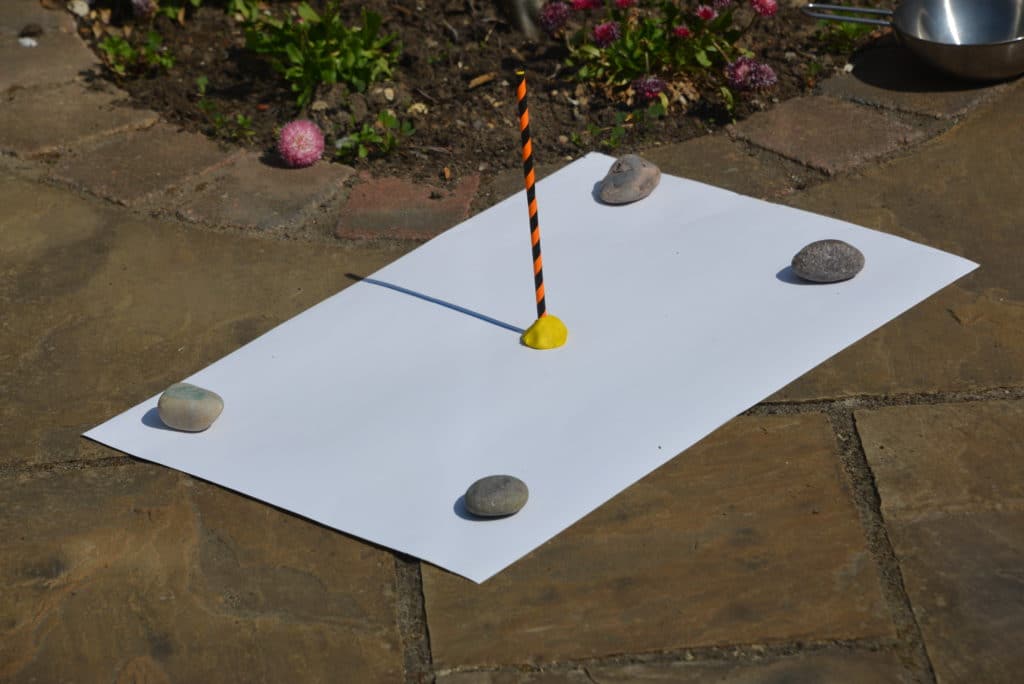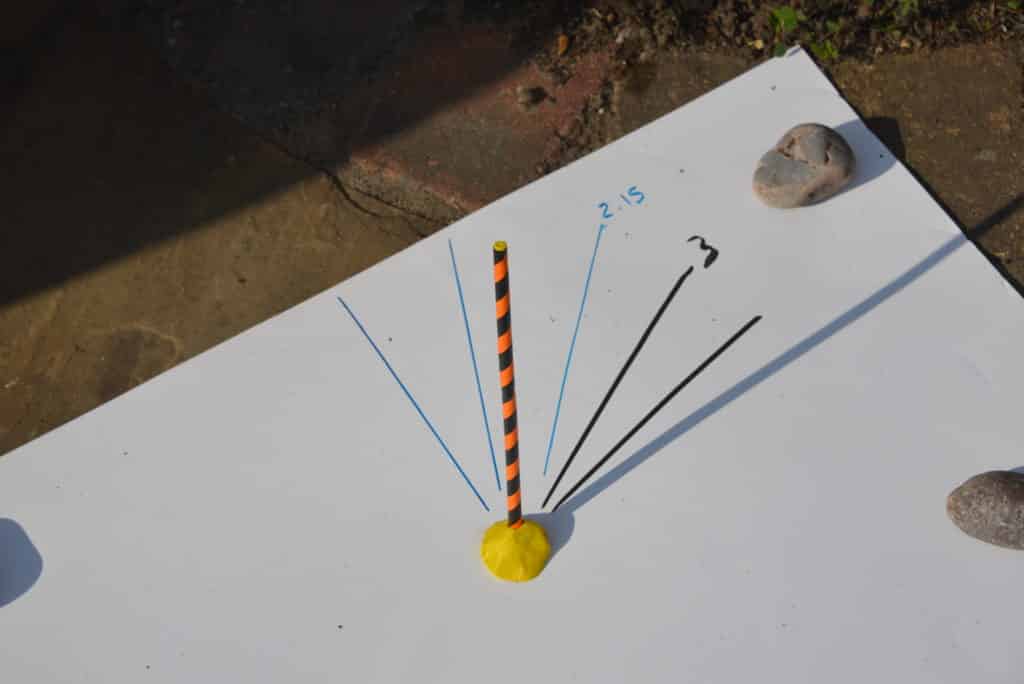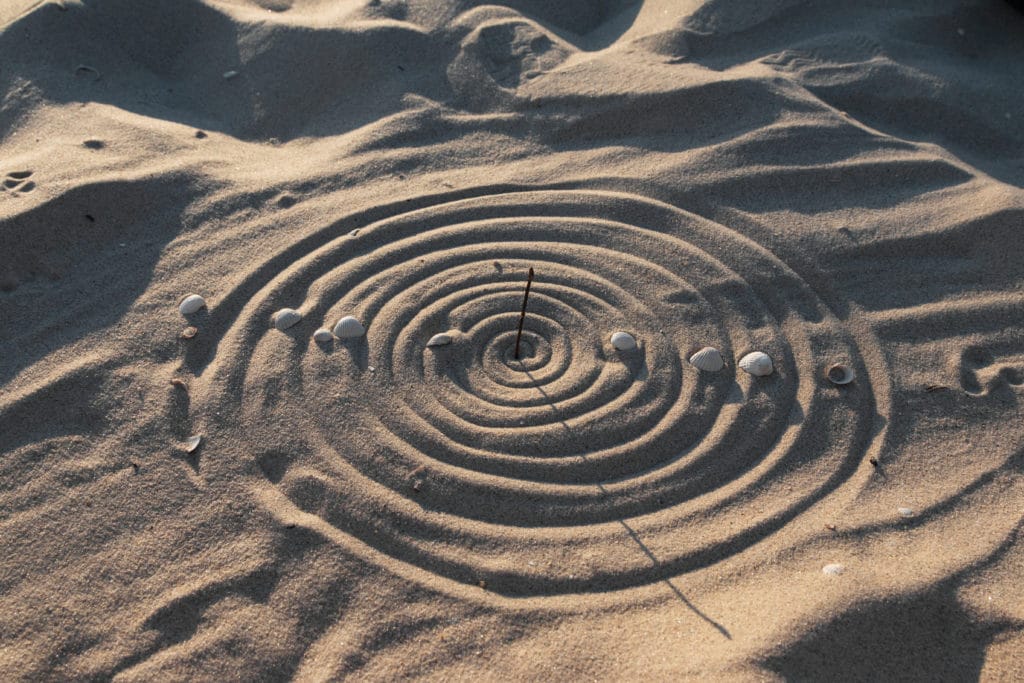Before we had clocks and watches people used sundials to mark the passing of time.
A sundial measures time by the position of the sun and usually has markings for each hour of sunlight. Sundials have something in the centre which casts a shadow over the markings showing what the time is. There are lots of ways to make a simple sundial, you can draw around your shadow from the same central point at different times throughout the day, use stones or even just a simple straw or stick like we did.

On a real sundial the central part ( gnomon ) usually sticks up at an angle from the dial plate ( base of the sundial ). It’s the shadow of the gnomon that moves around.
What you need
A sunny spot
Pen or chalk
Straw or Stick
Plasticine
How to make a simple sundial
You’ll need a sunny spot that doesn’t get shady.

If you’re using chalk you can draw directly on the ground, otherwise pen and paper work well too.
We used plasticine to make the straw stay upright.
We started our recording at 12 noon and watched as the shadow of the straw changed over the afternoon, marking every hour. We were a bit late with one of our readings as you can see.

Where was the first sundial?
The earliest known sundial was thought to have been made by Ancient Eqyptians around 1500bc.
More sundial ideas
We love this shell version from KCEdventures.
This beach version is brilliant too, all you need a stick and a sunny beach.

You might also like my collection of summer science experiments for a hot day.

Last Updated on March 28, 2025 by Emma Vanstone

Leave a Reply